Last week Vox Media released a very interesting documentary about how fan-created stop-motion films shaped The LEGO Movie and other official LEGO animations. The LEGO Movie was not just an amazing animation feat, but it was also built on the legacy of homemade fan movies. Throughout The LEGO Movie, there are many subtle and not-so-subtle references to the sometimes-inspiring, sometimes-confusing relationship between the LEGO company and their fans. 🙂
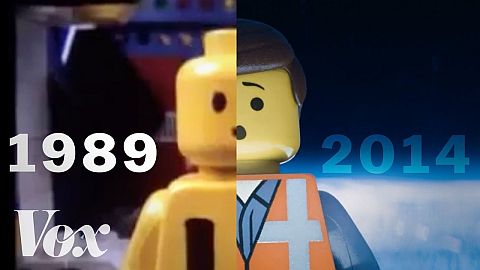
When you watch installments of the Warner Bros. line of LEGO movies (The LEGO Movie, The LEGO Batman Movie, and the upcoming LEGO Ninjago Movie), it’s hard not to be struck by how realistic the animation is. It isn’t quite traditional stop-motion, but it sure looks as if it could be. In fact, there was quite a bit of debate amongst fans when The LEGO Movie trailers came out. Some people thought the movie was going to be all stop-motion, some people said it was all CGI, while others believed it was a mixture of both.
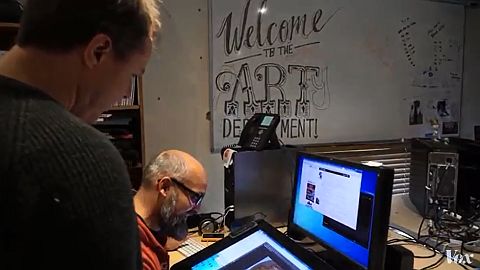
According to Grant Freckelton, production designer at Animal Logic, a Sydney-based visual effects studio that worked on all three of the movies, the films are almost completely CGI. However, while previous official LEGO films fought against the characteristics of the physical toy itself and it was obvious that CGI was used, animators at Animal Logic respected these perceived limitations and embraced the rules of stop-motion animation.
Animal Logic animators working on The LEGO Movie, The LEGO Batman Movie, and The LEGO Ninjago Movie spent a lot of time studying fan created stop-motion films to discover what made them so charming. It turns out that they are so good because they are so simple. Since the early 1970s, kids have made home movies with their own LEGO sets, some very basic equipment, and stop-motion animation techniques that they discovered along the way. The documentary references many of these early brickfilms, as you will see below (just hit the play button to watch).
Because of the CGI animation that faithfully mimics stop-motion films, you can freeze-frame pretty much any part of The LEGO Movie, look at the scene and build it at home from real LEGO bricks. That’s very impressive! I really like this quote from the documentary: “We were always trying to echo and hark back to how a child might make a film. So we would alternate between thinking like responsible filmmakers working on a large-budget Warner Brothers animated film, and then we would suddenly approach a scene as if we were like a kid animating in their basement.”
It was also interesting to hear about the two young Danish cousins who shot a short film called Journey to the Moon for the 50th wedding anniversary of their grandparents. This film is still widely considered to be the first time anyone made a motion picture with LEGO bricks. As this was in 1973, they didn’t even have minifigs to work with! When the two boys sent their movie to the managing director of the LEGO Group, they were rewarded with a tour of the LEGO factory and sent home with large LEGO sets. There are a number of references to Journey to the Moon in The LEGO Movie, including the playful non-stop motion interludes (i.e. levitation via fishing line), which were part of Journey to the Moon long before they appeared in The LEGO Movie.
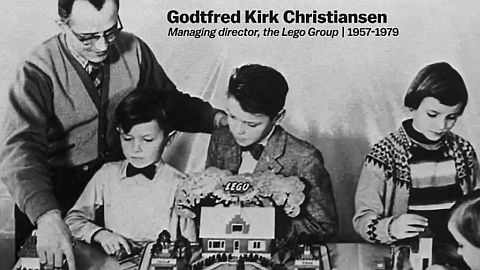
However, as explained in the documentary, LEGO didn’t always have the most positive reaction to homemade fan films. Between 1985 and 1989, a teenage animator named Lindsay Fleay worked on a 16-minute short called The Magic Portal. He used borrowed equipment to shoot it in his parents’ basement. Before entering festivals and competitions, Fleay sent the film to LEGO to see if they were interested in doing something with it. At first, LEGO responded with a letter of approval, but soon, the company started expressing legal concerns and issued a letter demanding Fleay to surrender all copies of the film within seven days. LEGO ultimately backed down, but Fleay had already missed out on most major film festivals by then. Fleay actually went on to work at Animal Logic, but left before production on LEGO projects began. However, his movie had a huge influence on the world of brickfilms. As stated in the documentary, “If you look at the live-action portion of The LEGO Movie, you’ll see Finn, the little kid, holds up a sort of cardboard tube and across the side is written Magic Portal.” Even the final break from the LEGO world into the real world to meet a human creator parallels The Magic Portal really closely.
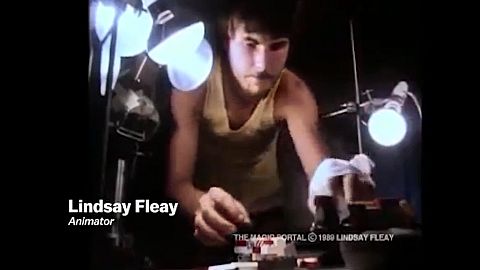
The last part of the documentary is also very touching, when Emmet from The LEGO Movie is quoted saying “Look at all these things that people built!” with four fan-created clips and shorts. Even though it’s easy to miss this scene on-screen, it is a wonderful tribute to fan films. And, as it said in the documentary, The LEGO Movie embraced the idea that amateur creators matter, and sometimes the way they handle source material is far better than the way major studios are used to doing it. That’s so true!
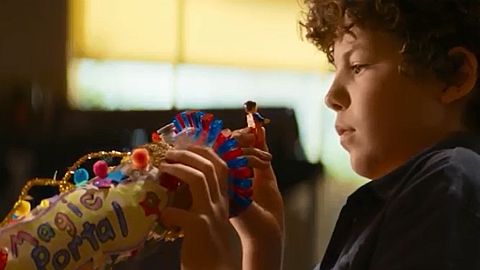
It’s hard to imagine what The LEGO Movie would be if it weren’t for the legacy, dedication and experiments of LEGO fans and brickfilmers. This documentary can make you appreciate The LEGO Movie even more, and it’s fun to look for all the hidden Easter eggs that reference fan films. In case you are interested to check them out, here is a list of some of the brickfilms referred to in the documentary:
- The Magic Portal
- Journey to the Moon
- Matrix 2003
- Monty Python and the Holy Grail in LEGO
- Tapporalli 2020
- Predator Montage
- ONE: A Space Odyssey
- Krieg der Steine
- Batman Begins Montage
- Delivery
- Star Wars Brickfilm
- Victim
What do you think? How did you like this look at how fan films shaped The LEGO Movie? Did you learn any interesting details that you weren’t aware of before? Are there any other Easter eggs you have noticed in the film? Feel free to share your own findings in the comment section below! 😉
And you might also like to check out the following related posts:












This really is amazing. Those pioneering brickfilmers have done a wonderful job, especially considering the equipment they had to work with, and that they did it all on their own with no help or reference. And those Danish kids weren’t even teens yet!
What those kids have done is incredible. So many of the techniques they discovered are still used today. I watched the first two already and will watch the rest this weekend. Very inspiring.
Yeah, they are very awesome. Have fun watching! 🙂
Oh, yeah, “The Magic Portal”. This was before Lego produced different minifig heads, and the only heads that existed were plain heads and heads with the smiling face, so Fleay made his own facial movement with ink and markers, or something…
It looks a bit rough, now, but it still holds up fairly well.
Yes, that’s part of the genius of these early animators. Like brickmaster said, what they had to work with was pretty rough by modern standards, but the techniques they used are still very relevant.
Very good documentary. really enjoyed it. We take for granted many of the techniques used in early home videos, but in their time they were revolutionary. And those techniques are still the foundation of brickfilming. The danish cousin’s video was my favorite. They used so many interesting techniques at such a young age!
Although brickfilming is basically just an offshoot of stop-motion animation, and stop-motion animation had already existed for many decades in the 1970’s…
That was very interesting. It gives me hope that I can do something like that . Watching THE LEGO MOVIE and then watching the THE LEGO BATMAN movie and to compare the two . I think I like THE LEGO MOVIE just a little bit more because in some scenes of THE BATMAN MOVIE it seems that there is so much going on that it was hard to follow. ( very busy in some scenes).
I also like The LEGO Movie better, mostly because it was all about LEGO. I’m not so much into Super Heroes, and although I really liked Batman in the LEGO movie, The Batman Movie was a bit too specific for me. And you are right, the movie moves fast! 😀
Also , THE LEGO MOVIE focuses on imagination and that’s the concept of LEGO. Sometimes we forget or worse grow out of the imagination part and start creating thing that would make sense to adults and look at the flaws when a child makes something out of LEGO. In actuality , the child is right all along . We forget sometimes that children can make things work with out looking at the barriers . Imagination is endless and has no barriers. Solution, always keep that inner child and never fully grow up.
Sounds like naivism (or primitivism), as an art movement…
Well said… 🙂
How so?
Seems like it’s usually called “Naive art” in English. Professional artists who are trying to emulate the styles and approaches of children, or occasionally more “primitive” artists and craftsmen working outside traditional Western art…
The perfect example is when an adult( or young adult ) picks apart a LEGO set and points out the in perfections , and a child would love it no matter what . The child sometimes doesn’t see the flaws and in perfection . There just happy to get a fun set to build.
But my MOCs are cooler… 😀
I think the main problem is extremes… it’s definitely a good thing to be able to analyze things in a grown-up way, to see the flaws and correct them, but at the same time, it’s a bad thing if that means that you see nothing but flaws! A grown-up ought to be able to have a higher appreciation of the good points of a set, but if that becomes cynicism, well, he might have been better off not growing up. 😉 So our goal shouldn’t be to stay children all our lives, but to grow up the right way. 🙂
Well said. I actually clearly remember that as a kid I was just as aware of limitations and imperfections as I’m now. I very much wished I had the parts I could build what I envisioned, but since there was no way that was going to happen, I just went with what I had. Kids have a way of filling in the blanks with their imagination if nothing else is available, but this doesn’t mean they don’t have bigger, bolder visions that they would like to fulfill. This is the main reason why so many AFOLs are buying the sets they always wanted as a kid. Finally, all that pent up desire can be fulfilled. 😀
Not all adults , some adults think that way . I know one thing LEGO encourages us to grow and expand in our creativity. The things that I said before were things I heard adult and children say from time to time. Like when sets seem incomplete , I say complete it to your desire. I know we all can’t be children forever , but , it would be nice if we could. I think LEGO brings out the child in us at times. For me personal, I think we don’t grow up .we will always have a little bit of a child in us. I call it ” Advanced childhood “.
Avant En 2001 c’est luka & masha. Après je sais pas parce que le grand aventure de lego C’est Lego Mario Et oui c’est un robot !